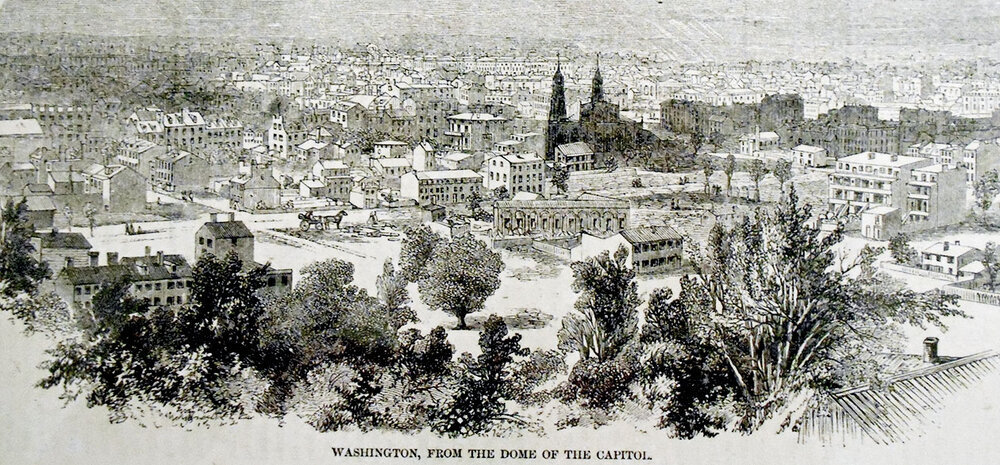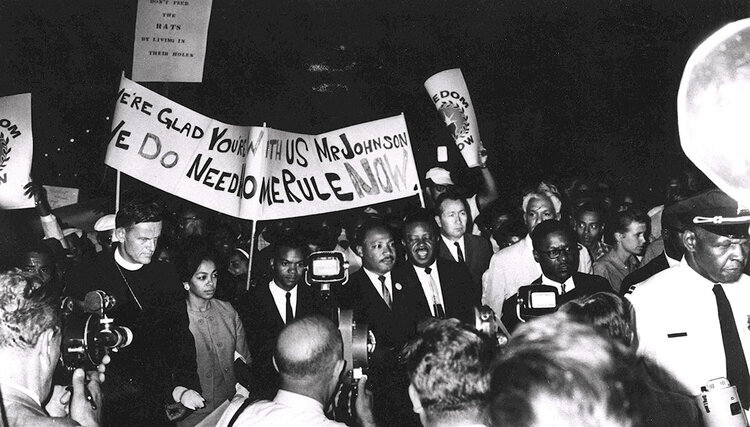
THE STORY
Painting: Lafayette Square, by Peter Waddell for the White House Historical Association.The Last Battlefront
Washington, D.C. is one of the only capitals in the world where its citizens have no representation in the national legislature and where Congress and federal authorities routinely intrude on the local government of the District. The film looks at four turning points in the history of Washington, D.C. to understand how this happened and the struggles of D.C. residents to restore their basic rights of self-government that other Americans enjoy.
HISTORY OF D.C.’S LACK OF VOTING RIGHTS
SEAT OF GOVERNMENT, 1783 – 1801
In the beginning, Americans are torn by conflicting visions of what their government should do.
Where should power lie, with a strong centralized government (The position of the Federalists) or a decentralized nation of yeoman farmers (as argued by the Jeffersonian Republicans)?
Chaos reigns in the early days of the Republic and founding fathers seek to safeguard a fledgling government against riots and rebellion.
No one knows if the system established at the Constitutional Convention will function. They fear that the whole jerrybuilt system might breakdown and shatter.
An Example for All the Land, 1862 – 1978
With the Civil War, progressive Republicans take over Congress and push through legislation—emancipation for D.C. slaves in April 1862, public schools for black children, and black suffrage—laying the ground for a biracial democracy in the capital. The District swells with African Americans as slaves follow the Army into the city and the nation’s foremost black leaders—Frederick Douglass and family, John Francis Cook, and John Mercer Langston-—make D.C. their home.
Ulysses Grant and the Republican Party see the legislation on behalf of African Americans and reconstruction of the capital as “an example for all the land,” an experiment in what they could achieve if they were to win the Civil War.
Civil Rights in Washington, D.C., 1950s – 1975
By the mid 20th century, power rests with the three commissioners, the D.C. Board of Trade, and segregationist southerners in Congress such as South Carolina Representative John McMillan.
McMillan heads the congressional committee overseeing the District, blocking all efforts at home rule.
Meanwhile, by 1957, Washington, D.C. becomes the nation’s first urban area to be majority black.
The Fight for Statehood, 1998 – Present
In 1998, twenty D.C. residents file a federal lawsuit asking for representation in Congress, either through statehood or by uniting D.C. with Maryland. But the court rejects their suit. Others seek a constitutional amendment to build public support for voting rights. But this fails as well. Residents then establish a non-profit organization “DC Vote” to build congressional and public support for voting rights.
DC Vote leaders collaborate with Republican Representative Tom Davis of Virginia to convert D.C.’s single non-voting delegate, held by Eleanor Holmes Norton, to a full congressional seat with voting rights by balancing her seat with an additional seat from Utah. The bill achieves bipartisan support, but at the last minute, Republicans introduce an amendment blocking D.C.’s ability to regulate guns in the District. Ms. Norton asks House leadership to drop the legislation.
Five years of hard lobbying and compromises come to naught. Worse, the newly elected Republican Party destroys any prospect for expanded rights for D.C. citizens.



